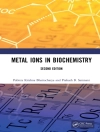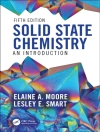This book covers the area of tribology broadly, providing important introductory chapters to fundamentals, processing, and applications of tribology. The book is designed primarily for easy and cohesive understanding for students and practicing scientists pursuing the area of tribology with focus on materials. This book helps students and practicing scientists alike understand that a comprehensive knowledge about the friction and wear properties of advanced materials is essential to further design and development of new materials.
The description of the wear micromechanisms of various materials will provide a strong background to the readers as how to design and develop new tribological materials. This book also places importance on the development of new ceramic composites in the context of tribological applications.
Some of the key features of the book include: Fundamentals section highlights the salient issues of ceramic processing and mechanical properties of important oxide and non-oxide ceramic systems; State of the art research findings on important ceramic composites are included and an understanding on the behavior of silicon carbide (Si C) based ceramic composites in dry sliding wear conditions is presented as a case study; Erosion wear behavior of ceramics, in which case studies on high temperature erosion behavior of Si C based composites and zirconium diboride (Zr B2) based composites is also covered; Wear behavior of ceramic coatings is rarely discussed in any tribology related books therefore a case study explaining the abrasion wear behavior of WC-Co coating is provided. Finally an appendix chapter is included in which a collection of several types of questions including multiple choice, short answer and long answer are provided.
สารบัญ
About the Authors xiii
Foreword by Dr. Sanak Mishra xvii
Foreword by Prof. Koji Kato xviii
Preface xix
Section I Fundamentals of Ceramics: Processing and Properties 1
1 Introduction: Ceramics and Tribology 3
1.1 Introduction 3
1.2 Classification of Engineering Materials 6
1.3 Engineering Ceramics 8
1.4 Structural Ceramics: Typical Properties and Tribological Applications 9
1.5 Structure of the Book 14
1.6 Closure 17
References 17
2 Processing of Bulk Ceramics and Coatings 21
2.1 Introduction 21
2.2 Conventional Processing of Ceramics 21
2.2.1 Sintering Mechanism 22
2.2.2 Conventional Processing of Ceramics 24
2.2.2.1 Powder Processing and Compaction 24
2.2.2.2 Pressureless Sintering 27
2.2.3 Advanced Processing of Ceramics 28
2.2.3.1 Hot Pressing 28
2.2.3.2 Microwave Sintering 28
2.2.3.3 Spark Plasma Sintering 29
2.3 Thermal Spray-Based Coating Deposition 30
2.3.1 Basics of Thermal Spray Deposition 33
2.3.1.1 Plasma Spray Deposition 33
2.3.1.2 Flame Spray Deposition 34
2.3.1.3 Wire Arc Spray Deposition 35
2.3.1.4 High-Velocity Oxy-Fuel Spray Deposition 36
2.3.1.5 Detonation Spray Coating 36
2.3.2 Bond Strength of Thermal Spray Coatings 39
2.3.2.1 Bond Mechanism 39
2.3.2.2 Test Methods 40
2.3.3 Coating Structure 42
2.3.3.1 Particle and Substrate Material Properties 42
2.3.3.2 Particle Temperature and Velocity 42
2.3.4 Case Study: WC-Co Coatings 42
2.4 Closure 49
References 49
3 Conventional and Advanced Machining Processes 53
3.1 Introduction 53
3.2 Conventional Machining 54
3.3 Advanced Machining Processes 57
3.3.1 Electro-Discharge Machining 57
3.3.1.1 Working Principle 59
3.3.1.2 EDM Process Variables 61
3.3.1.3 EDM Parameters 62
3.3.1.4 Surface Analysis 63
3.3.1.5 EDM of Ceramic-Based Composites 64
3.4 Closure 66
References 66
4 Mechanical Properties of Ceramics 71
4.1 Defining Stress and Strain 71
4.2 Comparison of Tensile Behavior 78
4.3 Brittle Fracture of Ceramics 80
4.4 Cracking in Brittle Materials 84
4.5 Experimental Assessment of Mechanical Properties 87
4.5.1 Hardness 87
4.5.2 Compressive Strength 88
4.5.3 Flexural Strength 89
4.5.4 Tensile Strength 91
4.5.5 Elastic Modulus 91
4.5.6 Fracture Toughness 95
4.5.6.1 Notched Beam Test 96
4.5.6.2 Indentation Microfracture Method 97
4.5.7 Practical Guidelines for Reliable Measurements 98
4.6 Closure 99
References 100
Section II Fundamentals of Tribology 103
5 Contact Surface Characteristics 105
5.1 Nature and Roughness of Contact Surfaces 105
5.2 Surface Roughness Measurement 108
5.2.1 Stylus Method 108
5.2.2 Atomic Force Microscopy 109
5.2.3 Optical Interferometry 110
5.2.4 Laser Surface Profilometry 111
5.2.5 Scanning Electron Microscopy 111
5.3 Bearing Area Curve and Cumulative Distribution Function 111
5.4 Nominal Versus Real Contact Area 112
5.5 Hertzian Contact Stress 115
5.6 Closure 116
References 118
6 Friction and Interface Temperature 119
6.1 Theory of Friction 119
6.1.1 Friction Laws and Mechanisms 120
6.2 Types of Friction 125
6.2.1 Static and Kinetic Friction 125
6.2.2 Slip-Stick Friction 126
6.2.3 Rolling Friction 126
6.3 Friction of Engineering Material Classes 127
6.4 Frictional Heating and Temperature at the Interface 139
6.4.1 Heating Due to Friction 140
6.4.2 Understanding the Temperature in the Contact: The Bulk and Flash Temperatures 141
6.5 Analytical Models Used to Predict the Temperatures in the Contact 145
6.6 Implications of the Important Contact Temperature Models 146
6.6.1 Archard Model 147
6.6.2 Kong–Ashby Model 148
6.7 Closure 149
References 150
7 Wear of Ceramics and Lubrication 155
7.1 Introduction 155
7.2 Testing Methods and Quantification of Wear of Materials 157
7.3 Classification of Wear Mechanisms 158
7.3.1 Tribomechanical Wear 159
7.3.1.1 Adhesive Wear 159
7.3.1.2 Abrasive Wear 161
7.3.1.3 Fatigue Wear 164
7.3.1.4 Fretting Wear 165
7.3.1.5 Erosive Wear 167
7.3.2 Tribochemical Wear 171
7.3.2.1 Oxidative Wear 174
7.4 Lubrication 175
7.4.1 Regimes of Lubrication and the Stribeck Curve 175
7.4.2 Influence of Lubricant Composition, Contact Pressure, and Temperature on Lubrication 178
7.5 Closure 181
References 182
Section III Case Study: Sliding Wear of Ceramics 185
8 Sliding Wear of Si C Ceramics 187
8.1 Introduction 187
8.2 Materials and Experiments 188
8.3 Friction and Wear Behavior of Si C Ceramics Sintered with a Small Amount of Yttria Additive 189
8.4 Influence of Mechanical Properties on Sliding Wear of Si C Ceramics 191
8.5 Wear Mechanisms 191
8.6 Closure 192
References 193
9 Sliding Wear of Si C-WC Composites 195
9.1 Introduction 195
9.2 Microstructure and Mechanical Properties of Si C-WC Composites 196
9.3 Influence of Mating Material and WC Content on Tribological Properties 197
9.3.1 Friction and Wear Behavior 197
9.3.2 Mechanisms of Material Removal 198
9.3.3 Friction and Wear of Si C-WC Composites: System-Dependent Properties 202
9.3.4 Wear Mechanisms 202
9.4 Reciprocated Sliding Wear Behavior of Si C-WC Composites 203
9.4.1 Frictional and Wear Behavior 205
9.4.2 Critical Analysis of Wear Mechanisms 206
9.4.2.1 Wear Debris Analysis 206
9.4.2.2 Effect of Temperature 208
9.4.2.3 Effect of Test Configuration on Wear Behavior 208
9.5 Closure 209
References 210
10 Sliding Wear of Zirconia-Toughened Alumina 215
10.1 Introduction 215
10.2 Mechanical Properties of ZTA 216
10.3 Sliding Wear Properties of ZTA 219
10.4 Correlation with Theoretical Analysis 222
10.5 Closure 224
References 225
11 Abrasive Wear of Detonation Sprayed WC-12Co Coatings 227
11.1 Introduction 227
11.2 Coatings and Abrasive Wear 228
11.3 Abrasive Wear Results 230
11.4 Surface and Subsurface Damage Mechanisms 231
11.5 Closure 233
References 234
12 Solid–Lubricant Interaction and Friction at Lubricated Contacts 237
12.1 Introduction 237
12.2 Materials and Sliding Wear Experiments 239
12.3 Wetting and Spreading Properties 240
12.4 Surface Energies of Different Classes of Materials 242
12.5 Wetting Evaluation of Engineering Surfaces 242
12.6 Effect of Wetting on EHL Friction 246
12.7 Correlation Between Spreading Parameter and Friction 247
12.8 Closure 249
References 250
Section IV Case Study: Erosive Wear of Ceramics 253
13 Erosive Wear of Si C-WC Composites 255
13.1 Introduction 255
13.2 Materials and Erosion Tests 256
13.3 Influence of Type of Erodent on Erosive Wear Behavior 256
13.4 Influence of Impingement Angle and WC Content on Erosive Wear Behavior 258
13.5 Correlating Erosive Wear Behavior with Microstructural Characteristics 259
13.6 Correlating Erosive Wear Behavior with Mechanical Properties 259
13.7 Erosive Wear Behavior at High Temperature 260
13.8 Closure 262
References 263
14 Thermo-Erosive Behavior of Zr B2-Si C Composites 265
14.1 Introduction 265
14.2 High-Temperature Erosion Tests and Computational Modeling 267
14.3 Computational Modeling of Thermo-Erosive Behavior 269
14.4 High-Temperature Erosion Test Results 270
14.5 Transient Thermal Studies Using FE Analysis 271
14.6 Coupled Thermo-Structural Analysis 271
14.7 Thermo-Erosive Behavior 273
14.8 Closure 274
References 275
15 Erosive Wear of WC-Co Coating 279
15.1 Introduction 279
15.2 Materials and Erosion Experiments 280
15.3 Erosive Wear Mechanisms (Surface Damage) 282
15.4 Erosive Wear Mechanisms (Subsurface Damage) 287
15.5 Correlating Wear Mechanism with Erodent and Coating Properties 290
15.6 Closure 293
References 293
Section V Case Study: Machining-Induced Wear of Cermets 295
16 Crater Wear of Ti CN Cermets in Conventional Machining 297
16.1 Introduction 297
16.2 Ti CN Cermets and Machining Conditions 298
16.3 Wear Mechanisms of Ti CN-WC-Ni Cermets 299
16.4 Machining with Ti CN-WC-Ta C-Ni-Co Cermet Tools 300
16.5 Correlating Cermet Composition, Microstructure, and Wear During
Machining 304
16.6 Closure 306
References 306
17 Wear of Ti CN-Based Cermets in Electrodischarge Machining 309
17.1 Introduction 309
17.2 Materials and EDM Tests 310
17.3 Wear of Ti CN-Cermets During EDM 310
17.4 Mechanisms of Material Removal During EDM 311
17.5 Closure 313
References 313
Section VI Future Scope 317
18 Perspective 319
18.1 Innovation Cycle for Wear-Resistant Materials 319
18.2 In Situ Diagnosis of Tribological Interaction 321
18.3 High-Temperature Wear Testing 321
18.4 Modeling and Simulation in Tribology 322
18.5 Tribomaterialomics– A New Concept 323
18.6 Education and Mentoring of Next-Generation Researchers 327
References 328
Appendix: Appraisal 329
A.I Multiple Choice Questions 329
A.II Select the Appropriate Combination 350
A.III Fill in the Blanks with the Most Appropriate Response 352
A.IV Mention the Appropriate Material/Equipment in the Blank 353
A.V Identify Whether the Following Statements are True/False 354
A.VI Short Review Questions and Descriptive Questions 354
A.VII Analytical Questions 363
A.VIII Model Answers 366
Index 369
เกี่ยวกับผู้แต่ง
BIKRAMJIT BASU, PHD, is a Professor at the Materials Research Center with joint appointment at the Centre for Biosystems Science and Engineering, and Interdisciplinary Center for Energy Research at Indian Institute of Science, Bangalore. Encompassing experimental and theoretical analysis, his research, at the intersection of Materials Science and Mechanical Engineering, has laid the foundation of next generation of wear resistant ceramics and provided deeper understanding into their wear mechanisms.
MITJAN KALIN, PHD, is a Professor at the Faculty of Mechanical Engineering, University of Ljubljana, where he is the Head of the Laboratory for Tribology and Interface Nanotechnology and the Chair for Tribology and Maintenance Technology. Dr Kalin’s areas of research are the wear and friction mechanisms of advanced materials, nanoscale interface phenomena, and boundary films for novel green-lubrication technologies, including his widely recognized contribution to the lubrication of DLC coatings.
B. VENKATA MANOJ KUMAR, PHD, is an Associate Professor at the Department of Metallurgical and Materials Engineering, Indian Institute of Technology, Roorkee. With the primary theme of understanding microstructure-property relations, Dr. Kumar has been actively involved in processing advanced ceramic systems and studying the influence of microstructural characteristics on their material removal mechanisms when subjected to varieties of wear and machining conditions.












